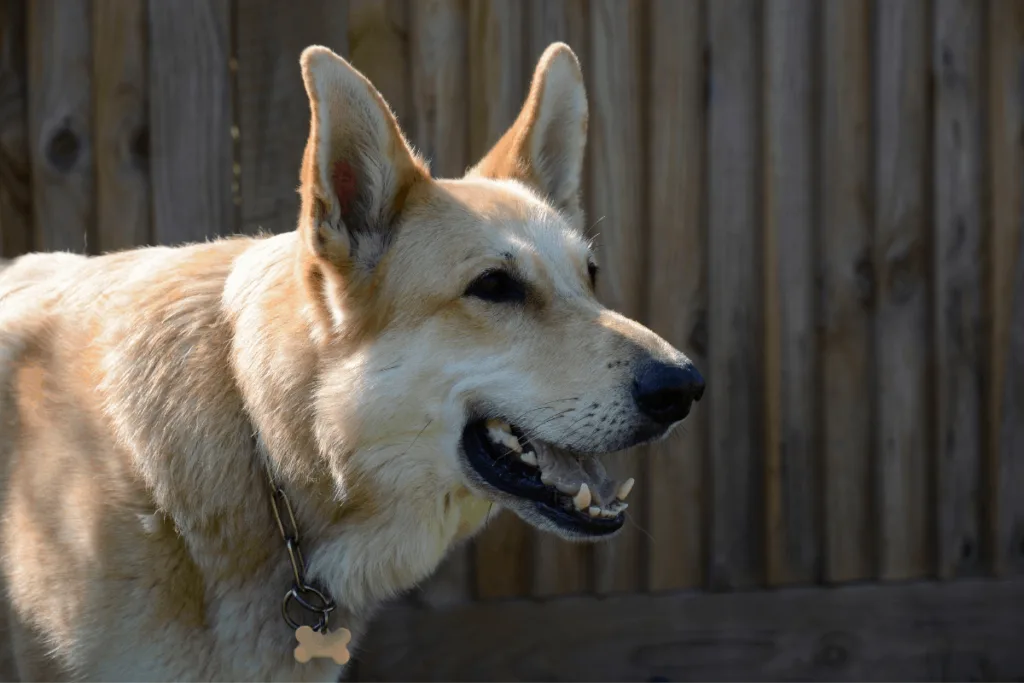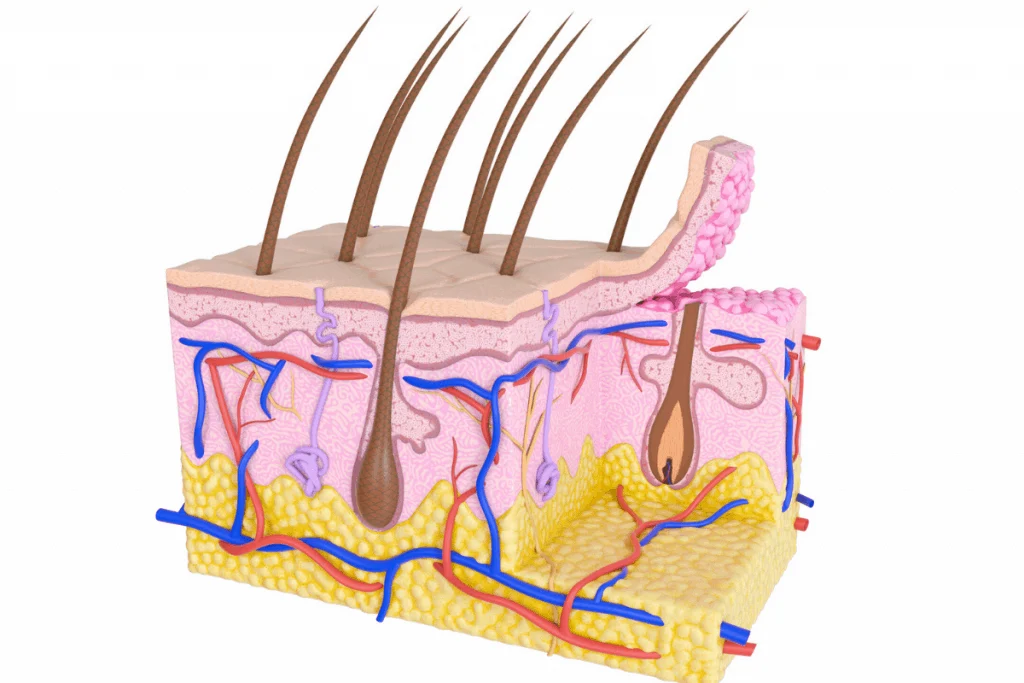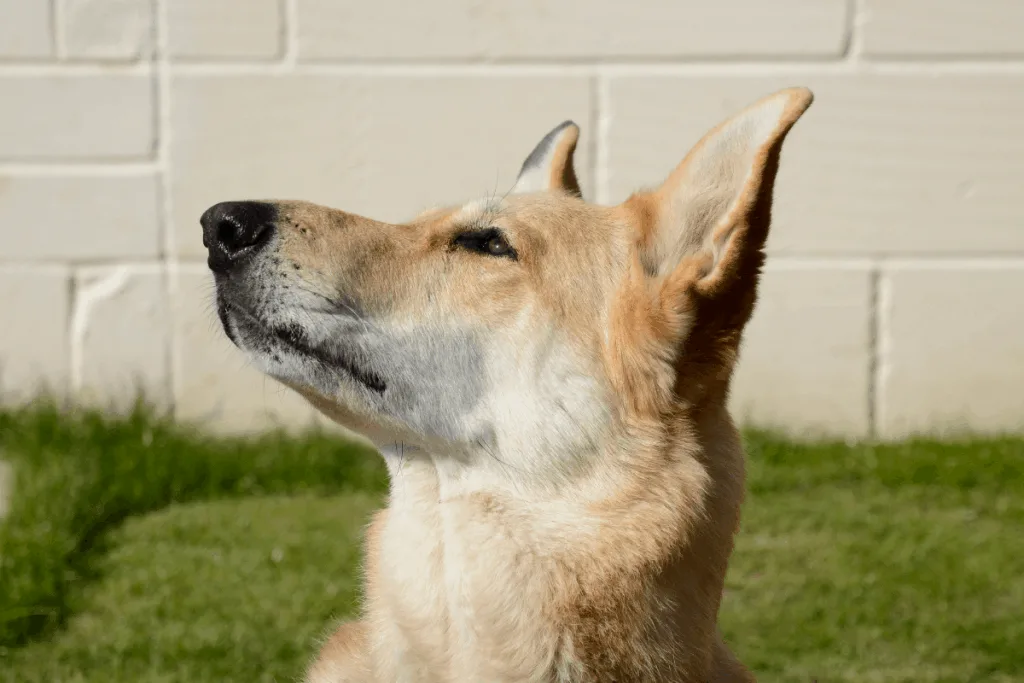
While most of us may be used to the stereotypical black and tan colors when it comes to the coat of a German Shepherd, this breed has a wide range of different coat colors that can drastically range from light to dark.
While the most common coat color found on German Shepherds is black and tan, more unusual and rare coat colors such as blonde can occur. Although some German Shepherd puppies are born with lighter, blonde coats, most of these dogs have coats that turn darker with age.
In this article, we’ll be exploring more about German Shepherds with blonde coats, the likelihood of this breed having a blonde coat, as well as other factors that can affect your German Shepherd’s coat color.
If you’re interested in learning more about these topics, keep on reading.
Click Here to Jump to a Section
How Rare Is a Blonde German Shepherd?
As we stated above, there is a large array of coat colors that German Shepherds can have. Many of these coat colors are recognized by the American Kennel Club, but blonde is not.
You’re more likely to spot a GSD puppy with a blonde coat, but an adult dog of this breed having a blonde coat is quite rare. Below, we’ll explore how a blonde GSD’s coat can change and darken over time.
A German Shepherd’s Coat Can Change Over Time
During the first eight weeks of a German Shepherd’s life, their coat color changes dramatically. Therefore it’s likely that whatever your young GSD looks like as a pup will be much different as an adult in terms of color.
As we stated above, a young blonde GSD is likely to have a dark coat in the coming years. While an entirely blonde or even slightly blonde coat for a GSD is rare, it’s possible with the right genes. The rarest color that a GSD can have is known as liver German Shepherd coat.
This color can easily be mistaken for blonde, as it’s a pale brown color. While this coat color is common in other breeds, it’s quite rare for a GSD. Unlike blonde, this coat color is a registered and recognized coat color for German Shepherds.
A young GSD can easily be born with a liver coat, and it can darken over time. What’s important to know is that while blonde is a very rare coat for any adult German Shepherd to have, it’s still possible.
Keep in mind that, as we’ve discussed, even if this breed’s coat may appear blonde, it may be an entirely different color as it gets older.
Below, we’ll discuss in more detail some other lighter coats that can be mistaken for blonde that are commonly found on German Shepherds.
A GSD Coat Color Can Change Based on Many Factors
While genetics are the primary that your German Shepherd’s coat can lighten and change over time, there are a few other less impactful factors to consider.
Factors such as diet, overall health, and the amount of sunlight your GSD receives can affect the pigment of your dog’s coat color, as well as how it changes over time. While these factors do play a role, again, it primarily comes down to your German Shepherd’s genes.
Not only is your GSD likely to have their coat color change over time, but the coat they had as a puppy is likely to fall out regardless once their transition into adulthood begins. Once a German Shepherd’s puppy hair begins to fall out, a darker and more mature coat begins to form.
While this coat may not always become darker over time, it’s still likely to change in some aspects. This is another factor to be mindful of while watching your GSD grow into an adult dog.
How Genes Can Affect Your German Shepherd’s Coat Color
Now that we’ve discussed what factors can affect your German Shepherd’s coat color, let’s take an in-depth look into the genes that play a role in your GSD’s coat color.
For every dog, no matter the breed, there are two main pigments that are responsible for the color of their coat. These pigments are known as pheomelanin and eumelanin, and they are responsible for your dog’s coat color genetics.

Below, we’ll explore each of these pigments in great detail and how they may contribute to turning your German Shepherd’s coat blonde.
Pheomelanin Contributes a Red Pigment
Pheomelanin is the pigment responsible for red colors showing up in your dog’s coat. This basic red color is actually responsible for the blonde coloring showing up in your German Shepherd’s coat, so when you see blonde, you know pheomelanin is responsible.
This red pigment can affect your dog’s coat and manifest in a variety of different tones, from a light cream to a golden color. As we’ve discussed earlier, there are plenty of lighter tones that dog owners can confuse with blonde.
A light cream, golden, or even white coat can be confused with being blonde. Not only does the pheomelanin factor into the coat color of your dog, but this pigment, mixed in with other external factors such as health and exposure to sunlight, can affect the color of your dog’s coat drastically.
It’s also important to note that pheomelanin only occurs within the coat of your dog. While some pigments will affect other areas such as the eyes and nose, pheomelanin doesn’t. Unlike eumelanin, this pigment only contains one color that can vary based on genes and other factors.
While pheomelanin is responsible for red, this pigment can change over time and look drastically different on multiple German Shepherds. Pheomelanin can be responsible for anything from an intense, vibrant red to a light tan color.
Eumelanin Contributes a Black Pigment
While eumelanin is responsible for a basic black pigment, similar to pheomelanin, this pigment can change based on a variety of internal and external factors. There are many different colors that can manifest onto your dog’s coat due to eumelanin.
Unlike pheomelanin, this pigment type is responsible for changing the color of other factors outside of your German Shepherds coat. Eumelanin contributes to your dog’s nose and eye color as well.
From brown, to gray, to solid back, this pigment is responsible for many different colors showing up on your German Shepherd.
Some of the other colors that eumelanin is responsible for are strikingly blonde, and we’ll explore each of these coat types below.
Liver GSD Coat
One of the most common color patterns you’ll find on your GSD is liver.
We discussed the liver coat type earlier, stating how this coat color can be easily confused with blonde. The basic black that eumelanin contributes can easily manifest into this liver color, which is actually a more pale brown color.
Unlike blonde, liver is actually recognized as an actual coat color by the American Kennel Club. As we stated earlier, puppies are likely to grow darker coats as they age into adulthood.
There have been plenty of instances where young German Shepherd puppies have been born with a blonde coat color and have grown into a liver coat color.
Sable GSD Coat
Another color coat type that can manifest due to eumelanin is sable. Once again, this is another common color pattern that you may find on your German Shepherd.
If you’ve ever seen a GSD with black or dark tips at the ends of their hair, this is a sable coat coloring. Mixed with both black and tan coloring, this unique blend makes this GSD very special.
Similar to the liver coat, the sable coat coloring is also recognized as a legitimate coat pattern by the American Kennel Club.
Also similar to liver, it’s very common for German Shepherds to be born blonde only to outgrow their blonde coat and form a sable coat pattern.
While sable has the capability to turn very dark, it can also turn your dog’s coat pattern very light.
As we stated earlier, it primarily depends on genetics, as well as other external factors that may affect the pigmentation of your dog’s coat.
Blue GSD Coat
A truly rare coat pattern, the blue German Shepherd is not easily found compared to those who are black and tan.
The reason for this name comes from the fact that their dark black coat seems to have a hue of blue when exposed to certain lighting.
Many blue German Shepherds puppies who were born with dark black coats that give off that blue hue usually grow up to have light gray coats.
While a blue GSD is not likely to be confused with a blonde German Shepherd, both of these types of coat colors are similar in that they are both just as rare.
While not recognized by the AKC, this blue GSD color coat is one of a kind and a truly rare find.
Isabella GSD Coat
Another rare coat colored German Shepherd is the Isabella, which is a combination of both the blue and liver color pattern.
The probability of a GSD inheriting the genes to have this kind of coat is extremely rare, seeing how they are only created via recessive genes.
It’s important to note that the Isabella color coat doesn’t have one set color pattern and can manifest in a number of different ways based on your GSD genetics.
Mixing both tan and black colors, the Isabella makes for a stunning GSD coat that’s just as rare as a blonde German Shepherd.
Once again, this color pattern is so rare that it has yet to be recognized or registered as a valid coat coloring by the AKC.
This also goes for your German Shepherds eyes and nose, seeing how eumelanin affects these aspects as well.
Agouti GSD Coat
Similar to many of the other coat colors we’ve explored in this article, Agouti expresses a variety of different colors and can look completely different on two different German Shepherds.
The most common underlying tone that Agouti expresses is golden, which can be mistaken for blonde a lot of the time. Agouti is also commonly referred to as “wolf color,” as this color pattern is the closest to what wolves have.
Once again, external factors, as well as genetics, can play a role in terms of how Agouti appears on your GSD.
While not recognized by the AKC as a coat color for German Shepherds, this light wolf gray pattern can easily be mistaken for blonde, and is just as stunning as it is rare.
What Else You Should Know About Blonde German Shepherds

Now that we’ve gone over the multiple different coat colors you may find on your GSD, let’s explore what else you need to know about blonde German Shepherds.
Coat Color Has No Effect on Your German Shepherd’s Health
While we are able to understand how and why certain GSD inherit certain coat colors, these colors and pigments have no effect on their health and overall wellbeing.
While your GSD’s coat colors can drastically change over the course of a few years or even a few months, the pigment of their coat isn’t an indication of how their health is.
This is an important factor to be mindful of, as some dog owners worry that there’s something to worry about when their pet’s coat changes so suddenly.
This is nothing to worry about and a perfectly natural response to your dog entering adulthood, as we discussed previously.
If your GSD has a largely blonde coat as a puppy, and you notice it begins to darken as they get older, this should cause you no concern, as it’s only a natural occurring response.
Your GSD Has a Double Layer Coat
Not all dogs have a double layer coat, but most German Shepherds do. Your GSD has an inner and an outer layer, with the inner layer usually being undetectable and barely noticeable.
The interior coat is usually one solid color, and its purpose is to keep your dog warm.
Your German Shepherd’s inner layer may be blonde, and you wouldn’t even know, as it’s a hidden layer that serves to protect your pup from the cold.
The outer layer has a lot more jobs compared to the inner layer, and its duties include keeping your GSD safe from the external elements that may harm them.
The outer layer can also be a solid color, but it’s likely that your GSD outer layer expresses some sort of pattern.
Blonde can easily occur on either layer for your GSD, but you’re more likely to find blonde on the outer layer of your GSD puppies.
While it’s still possible to find an adult German Shepherd with a blonde coat, it’s definitely a rare sight.
A Blonde GSD Is Likely a Mixed Breed
While there are many reasons as to why your GSD has some kind of blonde coat color, one of the reasons may be that your GSD is actually a mixed breed.
Hybrid breeding amongst breeders is very popular nowadays and can result in different looking breeds of all different shapes, sizes, and even colors.
If you are purchasing a GSD from a breeder, it’s important to do your research before doing business with them.
It’s also crucial that you do proper research beforehand to ensure that you have the proper tools and knowledge to give a GSD puppy or adult a loving and caring home.
As long as you commit to working with a professional and health-oriented breeder, you should be good to go.
Your Blonde GSD May Actually Have No Pigmentation
As we have seen, it’s easy for people to confuse a lighter pigment on their dog’s coat for being blonde. However, certain colors, as previously mentioned, have a tendency to look blonde, especially on GSD puppies.
You may even have a white GSD that’s been mistaken for having a blonde exterior coat. White has actually become a common GSD coat color over time, as breeders have created this GSD coat color in recent years.
While some may think of white as its own color, white is really the absence of pigment.
While looking at how certain German Shepherds manifest white on their coat, it’s easy to see how this coat color can sometimes be mistaken as being blonde.
Final Thoughts
You should now understand everything you need to know about the blonde German Shepherd.
We went over how rare this kind of GSD actually is, as well as what causes their coat to turn blonde.
You should also now be aware of the most crucial factor in determining coat color – the two different types of pigment found within your German Shepherd’s genetic makeup.
Eumelanin and pheomelanin can both drastically affect how your GSD looks and can easily make your dog’s coat color appear blonde.
We’ve also provided you with important information that you need to know before owning a blonde German Shepherd. For instance, your dog’s coat color isn’t correlated with their health or their overall wellbeing.
Keep in mind that your dog’s health is more important than their coat pattern or pigment, so that’s something you should be mindful of. Health first!
It is our hope that you now have an better understanding of what exactly it is that makes the blonde German Shepherd so very special!
